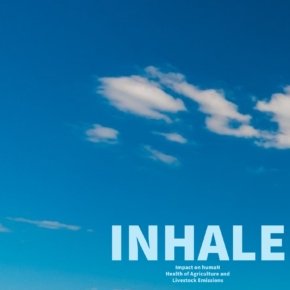Air pollution remains Europe’s top environmental threat to health, as recently reminded by the European Environmental Agency. Italy is the second EU country for premature deaths from air pollution, with the highest concentration in the affluent and highly populated Po valley. The COVID-19 pandemic has made air pollution more salient, by raising awareness of its devastating effects and amplification of concurrent diseases, including viral ones. However, it has also made clear the extent to which agriculture and livestock are part of the problem, and should likewise be part of the solution. Agriculture is the main source of ammonia, due to animal husbandry and its associated livestock events processing, and to a lesser extent from fertilizer use. The contribution of ammonia emissions to PM levels can be very significant.

18 months da 01/09/2021 a 28/02/2023
General objectives
- To assess human health impacts from agriculture activities per subsector (type of animal farming and type crop).
- To use data science methods such as machine learning and spatial econometrics and leverage on the COVID-19 lockdown disruptiveness in order to isolate sectoral contribution.
- To provide policy relevant information by assessing the sources of ammonium aerosol pollution, its spatial distribution and its formation regimes.
- To deliver a policy support tool based on data science to address smart spreading windows that minimize the human exposure to air pollution.
- To produce clear and accessible science-based information that can inform the policy debate and the development of sustainable agricultural abatement strategies in the Lombard Po Valley region, establishing a dialogue between stakeholders involved in the agricultural sector and informing civil society on the outcomes of the INHALE project.
CMCC role:
CMCC will participate in all the tasks of this project. Especially focusing on the data search and collection, ammonium salts formation regimes and spatial correlation and source apportionment.
Activities:
WP1 and WP2 use data science to produce science-based content on the air pollution impact of the agricultural sector on human health.
While WP3 focuses on the interface with stakeholders and civil society.
WP1 assesses the health impacts of the agricultural sector on human health using machine learning techniques. It takes a top-down approach, departing from concentrations to pin down the impact of agricultural activities.
WP1 investigates the precursor regimens of ammonium PM to determine the limiting precursor.
WP2 takes a bottom-up approach, going from the agricultural activities to air pollution exposure. This WP not only delivers the magnitude, but also the spatial distribution of the burden of the agricultural sub activities.
WP3 deals with all communication and outreach activities that involve interaction with the civil society. Either by communicating relevant results or by providing tools to deliver smart solutions to reduce exposure.
Expected results:
Assessment report on agricultural impacts and ammonium formation regimes. Source identification assessment of agriculture sub-activities to PM exposure and quantitative spatial distribution of the agricultural sub-sector pollution burden. Additionally, we expect to provide a prototype of ‘Smart spreading window tool’. Finally, we hope to involve the regional stakeholders in a dialog to support the regional debate on air pollution.
Partners:
Legambiente Lombardia


